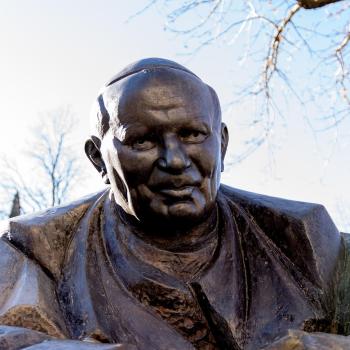JIM ASKS:
Muslims in the U.S.: Sunni or Shi’a?
And a second reader asks about the two groups’ numbers and over-all relationship on the international level.
THE RELIGION GUY ANSWERS:
This two-sided split underlies the increasingly dangerous Mideast rivalry between a rising Shi’a axis under revolutionary Iran and a bloc led by Saudi Arabia with its strict Sunni regime. A 2012 Pew Research survey asked people in Sunni lands “do you personally consider Shi’as to be Muslims or not?” Those answering “no” ranged from 37 to 52 percent in Egypt, Indonesia, Jordan, Morocco, Pakistan, and Tunisia. This troublesome rejection of Shi’a religious legitimacy is enforced with a vengeance by the bloodthirsty “Islamic State” that purports to have restored the Sunni “caliphate” within Iraq and Syria.
On Jim’s question, there’s considerable dispute about the total of U.S. Muslims but Pew estimates 10 to 15 percent are Shi’a, roughly the same as in Canada and Britain. Iran contains some 40 percent of the world’s Shi’as, followed by sizable populations in southern Iraq, India, and Pakistan, and smaller numbers across Afghanistan, Azerbaijan, Kuwait, Lebanon, Nigeria, Oman, Qatar, Saudi Arabia, South Africa, Syria, Turkey, United Arab Emirates, and Yemen.
Globally, the Muslim population estimated at 1.5 billion is heavily Sunni, with a Shi’a minority of perhaps 13 percent. Some say followers of Sufi mysticism form a third branch of Islam, which is more or less true, but they overlap the other two categories and are hard to count. (This over-simplified discussion will omit many Muslim variants and those regarded as heterodox.)
The Sunni – Shi’a schism was as much political as religious. It originated at the faith’s very beginnings with the crisis when the Prophet Muhammad died in 632 C.E. The founder evidently defined no plan everyone could agree on for the choice of the first “caliph” (from the Arabic for “successor”) to continue his combined religious, political, and military rule.
The ancestors of the Sunnis decided the consensus candidate was Abu Bakr al-Siddiq, deemed the closest to the Prophet among his key “Companions.” Those who became Shi’a (from the Arabic for “partisan”) believed Muhammad wanted the future leaders to come from witihin his own family. They backed Ali ibn Abi Talib, Muhammad’s first cousin who married his daughter Fatima and was the father of his grandsons Hasan and Husayn.
Abu Bakr’s supporters prevailed, but he died two years later (possibly by poisoning). His favored assistant Umar ibn al-Khattab then assumed leadership but was assassinated by a Persian dissident while at prayer. Uthman ibn Affan, named the third caliph, was assassinated by a rebel mob. Then Ali finally became a caliph recognized by the Shi’a party, and the fourth “rightly guided” caliph in the Sunni tradition. That resulted in a civil war mounted by Uthman’s followers with backing from Muhammad’s beloved widow Aisha, during which some 80,000 Muslims died in the Battle of the Camel (655) and Battle of Siffin (657).
Ali won the war, but was assassinated in 661 by a faction within his own ranks. The Prophet’s grandson Hasan would have been the Shi’a favorite to lead but he withdrew from the strife. In 681, caliphate troops killed the other grandson, Husayn, along with other male relatives who rejected the regime, which then severely persecuted supporters of the Ali-Husayn line.
Historians say that was the defining moment that consolidated the division for all time. Today, Husayn’s martyrdom date remains a major time of emotional public mourning in the Shi’a world. The Sunni caliphate continued through various family dynasties until modern-day Turkey abolished the institution in 1924. The final caliph, Abdulmecid II, was exiled and died in Paris in 1944.
Though Shi’a and Sunni Islam agree on the basics, Shi’ism reveres its martyrs and imams and developed its own legal system and culture of festivals, processions, shrines, and pilgrimages. Sunnis adhere strictly to the “Sunnah,” Muhammad’s example and teachings as found in “Hadith” collections, while Shi’as also recognize the special authority of living ayatollahs.
Shi’ism is divided into three main segments over the proper succession of authoritative imams in its early history: the Zaydi (prominent in Yemen), Nizari Ismailis (led by Britain’s moneyed Aga Khan IV), and the largest, Iran’s “Twelvers.” The latter believe the line of imams ended with the twelfth, Muhammad al-Mahdi al-Hujjah, who vanished at age five in 878 after his father was killed while under house arrest. Believers anticipate that this “Hidden Imam” will end his “occultation” and return as a messiah figure in the end times.
Turkish journalist Mustafa Akyol, the author of “Islam Without Extremes” (Norton), recently stated in the New York Times that the caliphate is not mandated either by the Quran or by the Hadith traditions. He contended that such fusion of the faith with political rule, past and present, “poisons Islam” and overshadows its theological and moral teachings. This is obviously a pressing issue for 21st Century Islam.
Comparative sidelights: Lest Christians be smug, their forebears often merged cross and crown and sometimes engaged in sectarian warfare, as recently as 1648. Unlike Islam with a founding schism, it took centuries for Christianity’s four main branches to develop: Catholicism, Orthodoxy (in two forms), Protestantism (with countless denominations), and “Independents” (variegated churches with no ties to the three older branches that originated in the developing world, e.g. South Africa’s Christian Zion Church, South Korea’s Olive Tree Church, and Brazil’s Universal Church of the Kingdom of God.)












